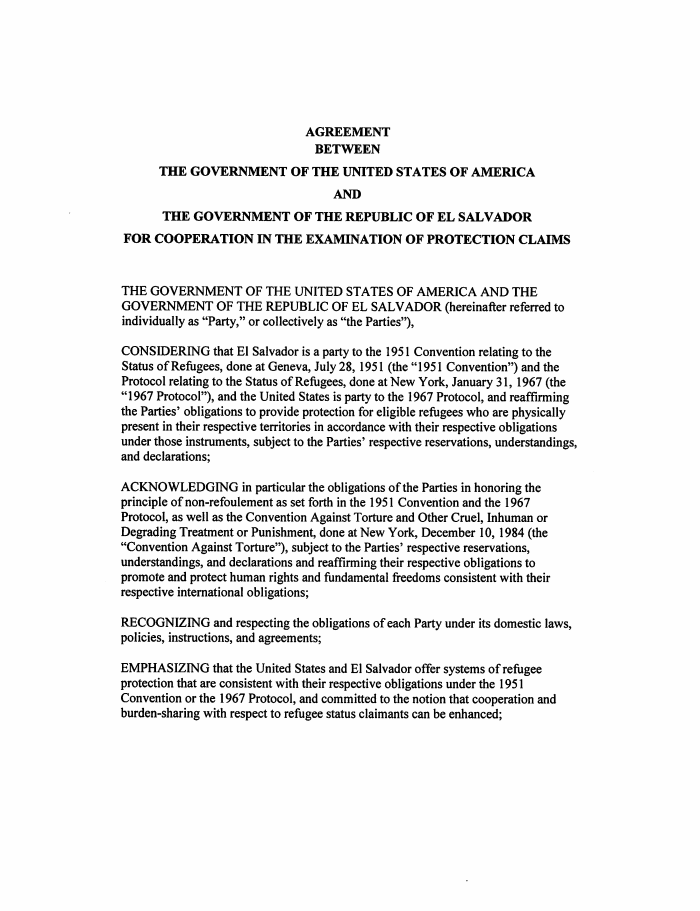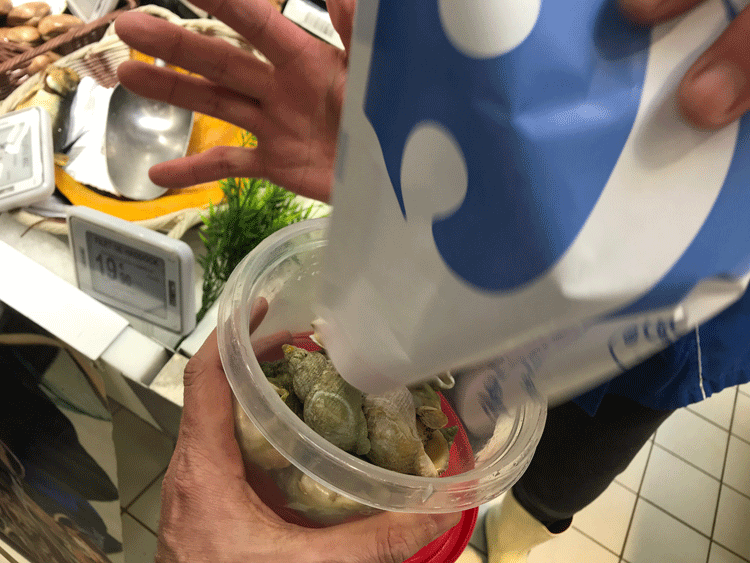The Trump administration has drastically expanded its “Remain in Mexico” program while undercutting the rights of asylum seekers at the United States southern border, Human Rights Watch said today. Under the Migrant Protection Protocols (MPP) – known as the “Remain in Mexico” program – asylum seekers in the US are returned to cities in Mexico where there is a shortage of shelter and high crime rates while awaiting asylum hearings in US immigration court.
Human Rights Watch found that asylum seekers face new or increased barriers to obtaining and communicating with legal counsel; increased closure of MPP court hearings to the public; and threats of kidnapping, extortion, and other violence while in Mexico.
“The inherently inhumane ‘Remain in Mexico’ program is getting more abusive by the day,” said Ariana Sawyer, assistant US Program researcher at Human Rights Watch. “The program’s rapid growth in recent months has put even more people and families in danger in Mexico while they await an increasingly unfair legal process in the US.”
The United States will begin sending all Central American asylum-seeking families to Mexico beginning the week of September 29, 2019 as part of the most recent expansion of the “Remain in Mexico” program, the Department of Homeland Security acting secretary, Kevin McAleenan, announced on September 23.
Human Rights Watch concluded in a July 2019 report that the MPP program has had serious rights consequences for asylum seekers, including high – if not insurmountable – barriers to due process on their asylum claims in the United States and threats and physical violence in Mexico. Human Rights Watch recently spoke to seven asylum seekers, as well as 26 attorneys, migrant shelter operators, Mexican government officials, immigration court workers, journalists, and advocates. Human Rights Watch also observed court hearings for 71 asylum seekers in August and analyzed court filings, declarations, photographs, and media reports.
“The [MPP] rules, which are never published, are constantly changing without advance notice,” said John Moore, an asylum attorney. “And so far, every change has had the effect of further restricting the already limited access we attorneys have with our clients.”
Beyond the expanded program, which began in January, the US State Department has also begun funding a “voluntary return” program carried out by the United Nations-affiliated International Organization for Migration (IOM). The organization facilitates the transportation of asylum seekers forced to wait in Mexico back to their country of origin but does not notify US immigration judges. This most likely results in negative judgments against asylum seekers for not appearing in court, possibly resulting in a ban of up to 10 years on entering the US again, when they could have withdrawn their cases without penalty.
Since July, the number of people being placed in the MPP program has almost tripled, from 15,079 as of June 24, to 40,033 as of September 7, according to the Mexican National Institute of Migration. The Trump administration has increased the number of asylum seekers it places in the program at ports of entry near San Diego and Calexico, California and El Paso, Texas, where the program had already been in place. The administration has also expanded the program to Laredo and Brownsville, Texas, even as the overall number of border apprehensions has declined.
As of early August, more than 26,000 additional asylum seekers were waiting in Mexican border cities on unofficial lists to be processed by US Customs and Border Protection as part the US practice of “metering,” or of limiting the number of people who can apply for asylum each day by turning them back from ports of entry in violation of international law.
In total, more than 66,000 asylum seekers are now in Mexico, forced to wait months or years for their cases to be decided in the US. Some have given up waiting and have attempted to cross illicitly in more remote and dangerous parts of the border, at times with deadly results.
As problematic as the MPP program is, seeking asylum will likely soon become even more limited. On September 11, the Supreme Court temporarily allowed the Trump administration to carry out an asylum ban against anyone entering the country by land after July 16 who transited through a third country without applying for asylum there. This could affect at least 46,000 asylum seekers, placed in the MPP program or on a metering list after mid-July, according to calculations based on data from the Mexican National Institute of Migration. Asylum seekers may still be eligible for other forms of protection, but they carry much higher eligibility standards and do not provide the same level of relief.
Human Rights Watch contacted the Department of Homeland Security and the US Justice Department’s Executive Office for Immigration Review with its findings and questions regarding the policy changes and developments but have not to date received a response. The US government should immediately cease returning asylum seekers to Mexico and instead ensure them meaningful access to full and fair asylum proceedings in US immigration courts, Human Rights Watch said. Congress should urgently act to cease funding the MPP program. The US should manage asylum-seeker arrivals through a genuine humanitarian response that includes fair determinations of an asylum seeker’s eligibility to remain in the US. The US should simultaneously pursue longer-term efforts to address the root causes of forced displacement in Central America.
“The Trump administration seems intent on making the bad situation for asylum seekers even worse by further depriving them of due process rights,” Sawyer said. “The US Congress should step in and put an end to these mean-spirited attempts to undermine and destroy the US asylum system.”
New Concerns over the MPP Program
Increased Barriers to Legal Representation
Everyone in the MPP has the right to an attorney at their own cost, but it has been nearly impossible for asylum seekers forced to remain in Mexico to get legal representation. Only about 1.3 percent of participants have legal representation, according to the Transactional Records Access Clearinghouse at Syracuse University, a research center that examined US immigration court records through June 2019. In recent months, the US government has raised new barriers to obtaining representation and accessing counsel.
When the Department of Homeland Security created the program, it issued guidance that:
in order to facilitate access to counsel for aliens subject to return to Mexico under the MPP who will be transported to their immigration court hearings, [agents] will depart from the [port of entry] with the alien at a time sufficient to ensure arrival at the immigration court not later than one hour before his or her scheduled hearing time in order to afford the alien the opportunity to meet in-person with his or her legal representative.
However, according to several attorneys Human Rights Watch interviewed in El Paso, Texas, and as Human Rights Watch observed on August 12 to 15 in El Paso Immigration Court, the Department of Homeland Security and the Executive Office for Immigration Review (EOIR), which manages the immigration court, have effectively barred attorneys from meeting with clients for the full hour before their client’s hearing begins. Rather than having free access to their clients, attorneys are now required to wait in the building lobby on a different level than the immigration court until the court administrator notifies security guards that attorneys may enter.
As Human Rights Watch has previously noted, one hour is insufficient for adequate attorney consultation and preparation. Still, several attorneys said that this time in court was crucial. Immigration court is often the only place where asylum seekers forced to wait in Mexico can meet with attorneys since lawyers capable of representing them typically work in the US. Attorneys cannot easily travel to Mexico because of security and logistical issues. For MPP participants without attorneys, there are now also new barriers to getting basic information and assistance about the asylum application process.
Human Rights Watch observed in May a coordinated effort by local nongovernmental organizations and attorneys in El Paso to perform know-your-rights presentations for asylum seekers without an attorney and to serve as “Friend of the Court,” at the judge’s discretion. The Executive Office for Immigration Review has recognized in the context of unaccompanied minors that a Friend of the Court “has a useful role to play in assisting the court and enhancing a respondent’s comprehension of proceedings.”
The agency’s memos also say that, “Immigration Judges and court administrators remain encouraged to facilitate pro bono representation” because pro bono attorneys provide “respondents with welcome legal assistance and the judge with efficiencies that can only be realized when the respondent is represented.”
To that end, immigration courts are encouraged to support “legal orientations and group rights presentations” by nonprofit organizations and attorneys.
One of the attorneys involved in coordinating the various outreach programs at the El Paso Immigration Court said, however, that on June 24 the agency began barring all contact between third parties and asylum seekers without legal representation in both the courtroom and the lobby outside. This effectively ended all know-your-rights presentations and pro bono case screenings, though no new memo was issued. Armed guards now prevent attorneys in the US from interacting with MPP participants unless the attorneys have already filed official notices that they are representing specific participants.
On July 8, the agency also began barring attorneys from serving as “Friend of the Court,” several attorneys told Human Rights Watch. No new memo has been issued on “Friend of the Court” either.
In a July 16 email to an attorney obtained by Human Rights Watch, an agency spokesman, Rob Barnes, said that the agency shut down “Friend of the Court” and know-your-rights presentations to protect asylum seekers from misinformation after it “became aware that persons from organizations not officially recognized by EOIR...were entering EOIR space in El Paso.
However, most of the attorneys and organizations now barred from performing know-your-rights presentations or serving as “Friend of the Court” in El Paso are listed on a form given to asylum seekers by the court of legal service providers, according to a copy of the form given to Human Rights Watch and attorneys and organizations coordinating those services.
Closure of Immigration Court Hearings to the Public
When Human Rights Watch observed court hearings in El Paso on May 8 to 10, the number of asylum seekers who had been placed in the MPP program and scheduled to appear in court was between 20 and 24 each day, with one judge hearing all of these cases in a single mass hearing. At the time, those numbers were considered high, and there was chaos and confusion as judges navigated a system that was never designed to provide hearings for people being kept outside the US.
When Human Rights Watch returned to observe hearings just over three months later, four judges were hearing a total of about 250 cases a day, an average of over 60 cases for each judge. Asylum seekers in the program, who would previously have been allowed into the US to pursue their claims at immigration courts dispersed around the country, have been primarily funneled through courts in just two border cities, causing tremendous pressures on these courts and errors in the system. Some asylum seekers who appeared in court found their cases were not in the system or received conflicting instructions about where or when to appear.
One US immigration official said the MPP program had “broken the courts,” Reuters reported.
The Executive Office for Immigration Review has stated that immigration court hearings are generally supposed to be open to the public. The regulations indicate that immigration judges may make exceptions and limit or close hearings if physical facilities are inadequate; if there is a need to protect witnesses, parties, or the public interest; if an abused spouse or abused child is to appear; or if information under seal is to be presented.
In recent weeks, however, journalists, attorneys, and other public observers have been barred from these courtrooms in El Paso by court administrators, security guards, and in at least one case, by a Department of Homeland Security attorney, who said that a courtroom was too full to allow a Human Rights Watch researcher entry.
Would-be observers are now frequently told by the court administrator or security guards that there is “no room,” and that dockets are all “too full.”
El Paso Immigration Court Administrator Rodney Buckmire told Human Rights Watch that hundreds of people receive hearings each day because asylum seekers “deserve their day in court,” but the chaos and errors in mass hearings, the lack of access to attorneys and legal advice, and the lack of transparency make clear that the MPP program is severely undermining due process.
During the week of September 9, the Trump administration began conducting hearings for asylum seekers returned to Mexico in makeshift tent courts in Laredo and Brownsville, where judges are expected to preside via videoconference. At a September 11 news conference, DHS would not commit to allowing observers for those hearings, citing “heightened security measures” since the courts are located near the border. Both attorneys and journalists have since been denied entry to these port courts.
Asylum Seekers Describe Risk of Kidnapping, Other Crimes
As the MPP has expanded, increasing numbers of asylum seekers have been placed at risk of kidnapping and other crimes in Mexico.
Two of the northern Mexican states to which asylum seekers were initially being returned under the program, Baja California and Chihuahua, are among those with the most homicides and other crimes in the country. Recent media reports have documented ongoing harm to asylum seekers there, including rape, kidnapping, sexual exploitation, assault, and other violent crimes.
The program has also been expanded to Nuevo Laredo and Matamoros, both in the Mexican state of Tamaulipas, which is on the US State Department’s “do not travel” list. The media and aid workers have also reported that migrants there have experienced physical violence, sexual assault, kidnapping, and other abuses. There have been multiple reports in 2019 alone of migrants being kidnapped as they attempt to reach the border by bus.
Jennifer Harbury, a human rights attorney and activist doing volunteer work with asylum-seekers on both sides of the border, collected sworn declarations that they had been victims of abuse from three asylum seekers who had been placed in the MPP program and bused by Mexican immigration authorities to Monterrey, Mexico, two and a half hours from the border. Human Rights Watch examined these declarations, in which asylum seekers reported robbery, extortion, and kidnapping, including by Mexican police.
Expansion to Mexican Cities with Even Fewer Protections
Harbury, who recently interviewed hundreds of migrants in Mexico, described asylum seekers sent to Nuevo Laredo as “fish in a barrel” because of their vulnerability to criminal organizations. She said that many of the asylum seekers she interviewed said they had been kidnapped or subjected to an armed assault at least once since they reached the border.
Because Mexican officials are in many cases reportedly themselves involved in crimes against migrants, and because nearly 98 percent of crimes in Mexico go unsolved, crimes committed against migrants routinely go unpunished.
In Matamoros, asylum seekers have no meaningful shelter access, said attorneys with Lawyers for Good Government (L4GG) who were last there from August 22 to 26. Instead, more than 500 asylum seekers were placed in an encampment in a plaza near the port of entry to the US, where they were sleeping out in the open, despite temperatures of over 100 degrees Fahrenheit. Henriette Vinet-Martin, a lawyer with the group, said she saw a “nursing mother sleeping on cardboard with her baby” and that attorneys also spoke to a woman in the MPP program there who said she had recently miscarried in a US hospital while in Customs and Border Protection custody. The attorneys said some asylum seekers had tents, but many did not.
Vinet-Martin and Claire Noone, another lawyer there as part of the L4GG project, said they found children with disabilities who had been placed in the MPP program, including two children with Down Syndrome, one of them eight months old.
Human Rights Watch also found that Customs and Border Protection continues to return asylum seekers with disabilities or other chronic health conditions to Mexico, despite the Department of Homeland Security’s initial guidance that no one with “known physical/mental health issues” would be placed in the program. In Ciudad Juárez, Human Rights Watch documented six such cases, four of them children. In one case, a 14-year-old boy had been placed in the program along with his mother and little brother, who both have intellectual disabilities, although the boy said they have family in the US. He appeared to be confused and distraught by his situation.
The Mexican government has taken some steps to protect migrants in Ciudad Juárez, including opening a large government-operated shelter. The shelter, which Human Rights Watch visited on August 22, has a capacity of 3,000 migrants and is well-stocked with food, blankets, sleeping pads, personal hygiene kits, and more. At the time of the visit, the shelter held 555 migrants, including 230 children, primarily asylum seekers in the MPP program.
One Mexican government official said the government will soon open two more shelters – one in Tijuana with a capacity of 3,000 and another in Mexicali with a capacity of 1,500.
Problems Affecting the ‘Assisted Voluntary Return’ Program
In October 2018, the International Organization for Migration began operating a $1.65 million US State Department-funded “Assisted Voluntary Return” program to assist migrants who have decided or felt compelled to return home. The return program originally targeted Central Americans traveling in large groups through the interior of Mexico. However, in July, the program began setting up offices in Ciudad Juárez, Tijuana, and Mexicali focusing on asylum seekers forced to wait in those cities after being placed in the MPP program. Alex Rigol Ploettner, who heads the International Organization for Migration office in Ciudad Juárez, said that the organization also provides material support such as bunk beds and personal hygiene kits to shelters, which the organization asks to refer interested asylum seekers to the Assisted Voluntary Return program. Four shelter operators in Ciudad Juárez confirmed these activities.
As of late August, Rigol Ploettner said approximately 500 asylum seekers in the MPP program had been referred to Assisted Voluntary Return. Of those 500, he said, about 95 percent were found to be eligible for the program.
He said the organization warns asylum seekers that returning to their home country may cause them to receive deportation orders from the US in absentia, meaning they will most likely face a ban on entering the US of up to 10 years.
The organization does not inform US immigration courts that they have returned asylum seekers, nor are asylum seekers assisted in withdrawing their petition for asylum, which would avoid future penalties in the US.
“For now, as the IOM, we don’t have a direct mechanism for withdrawal,” Rigol Ploettner said. Human Rights Watch is deeply concerned about the failure to notify the asylum courts when people who are on US immigration court dockets return home and the negative legal consequences for asylum seekers. These concerns are heightened by the environment in which the Assisted Voluntary Return Program is operating. Asylum seekers in the MPP are in such a vulnerable situation that it cannot be assumed that decisions to return home are based on informed consent.





































































































































































































































